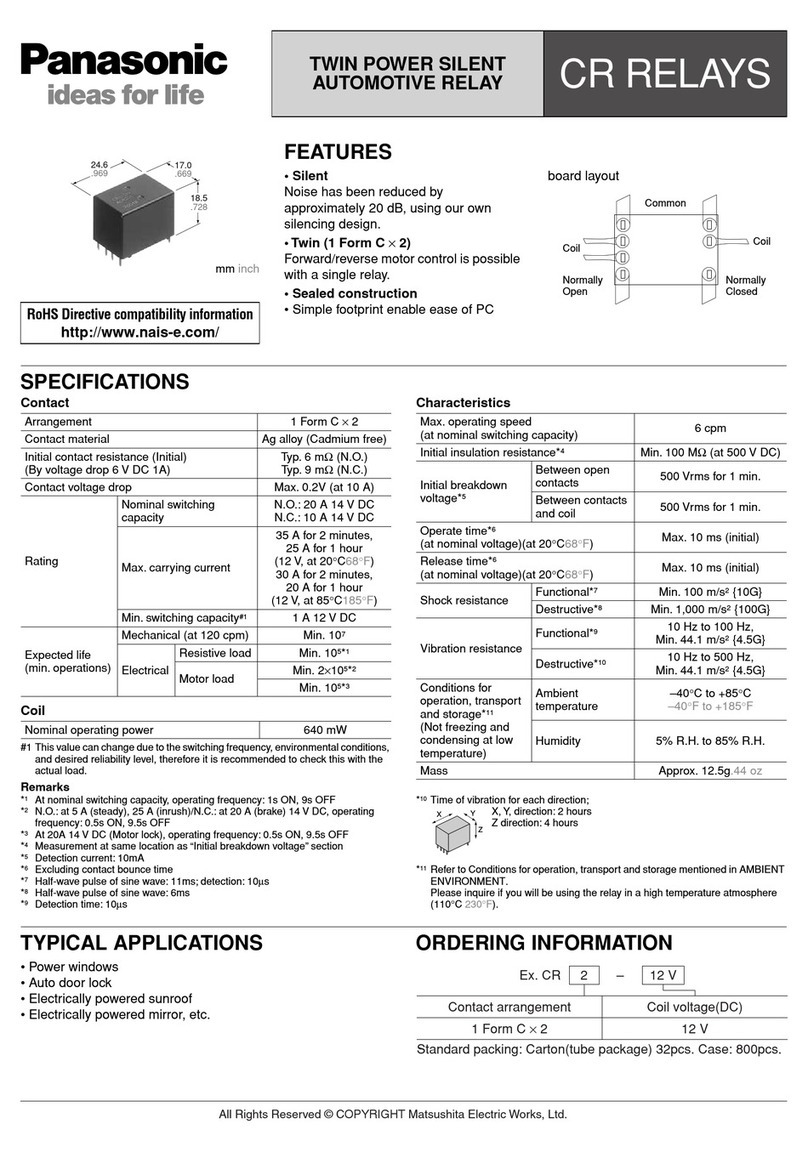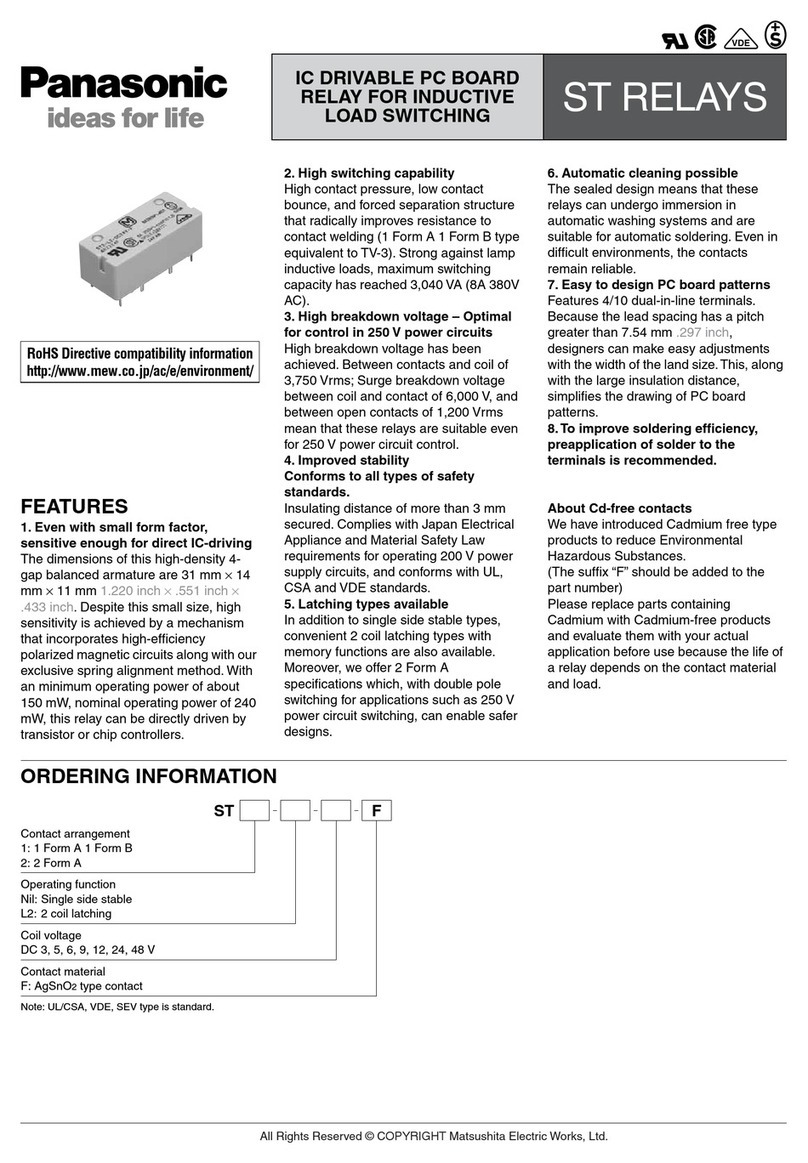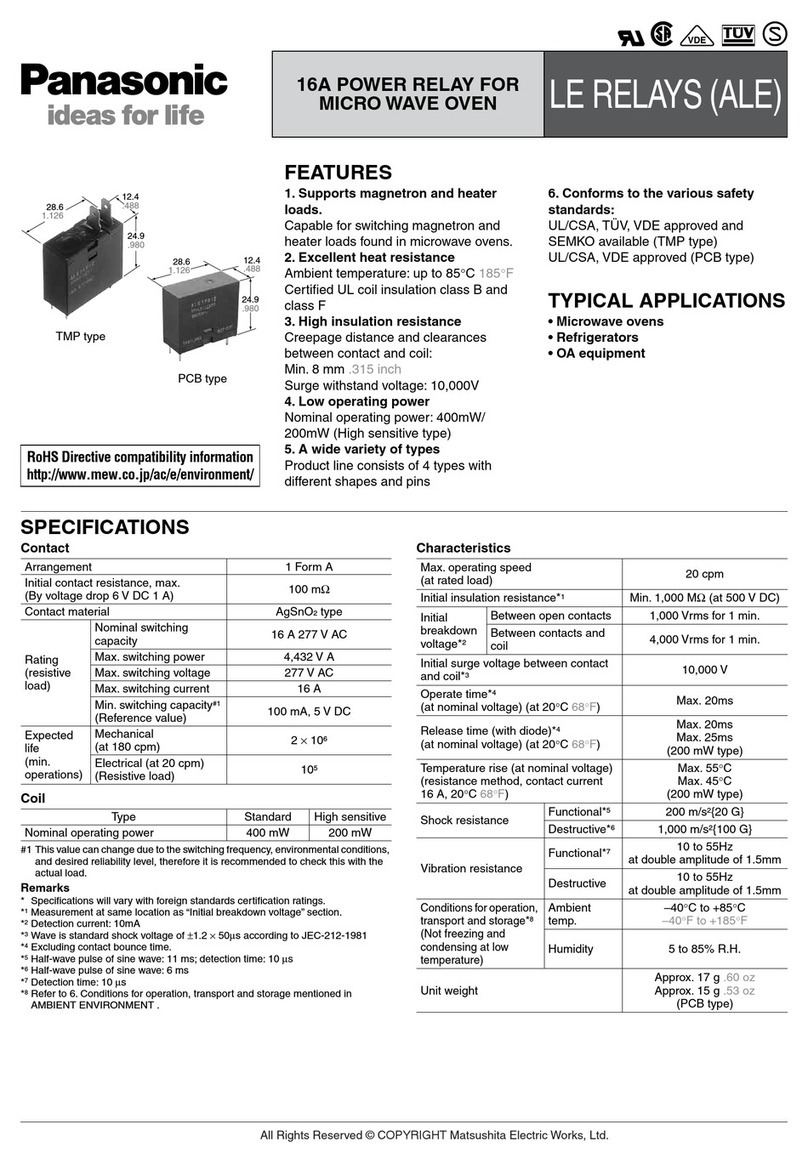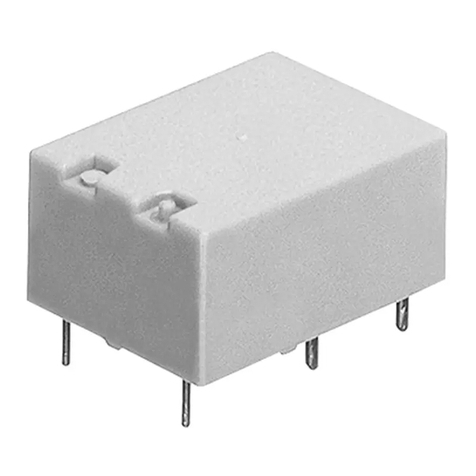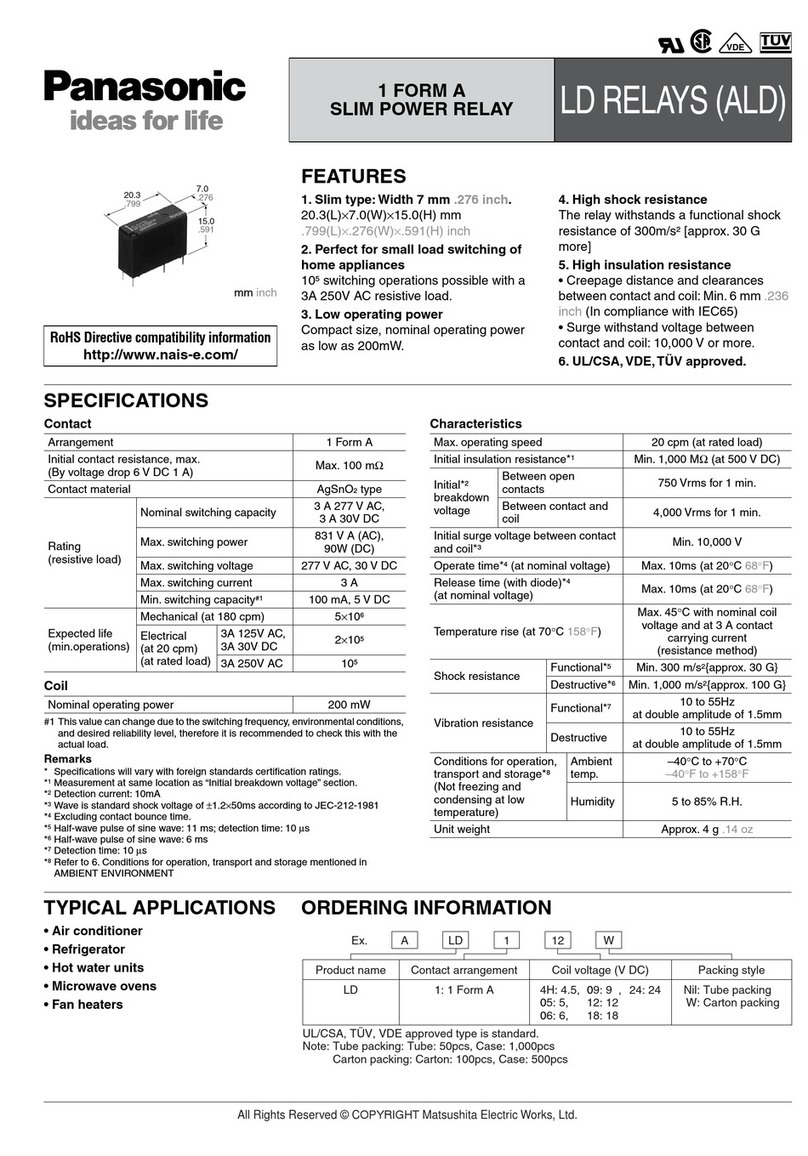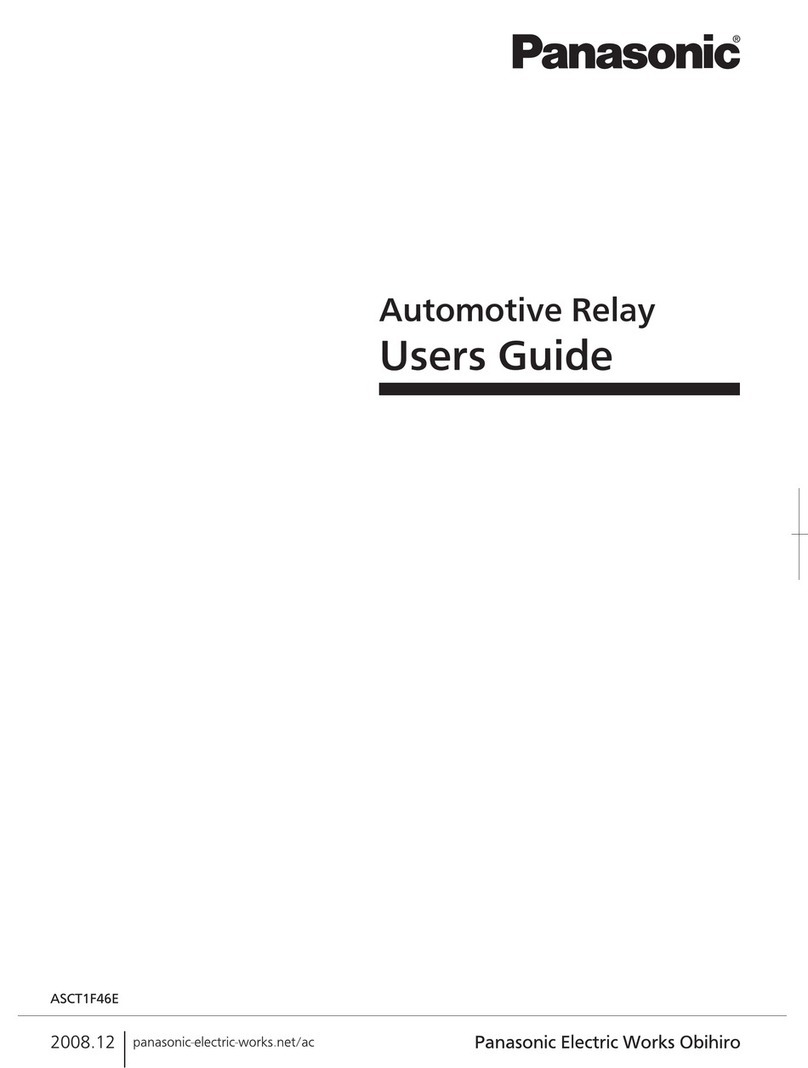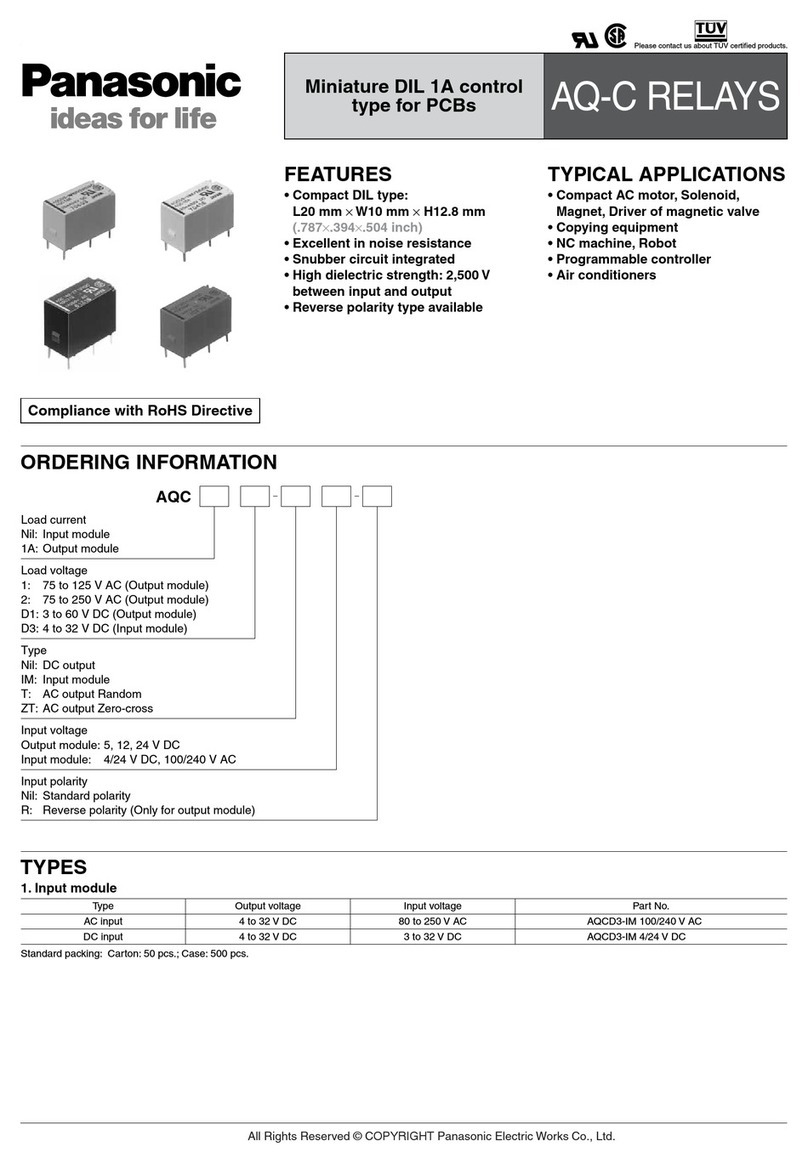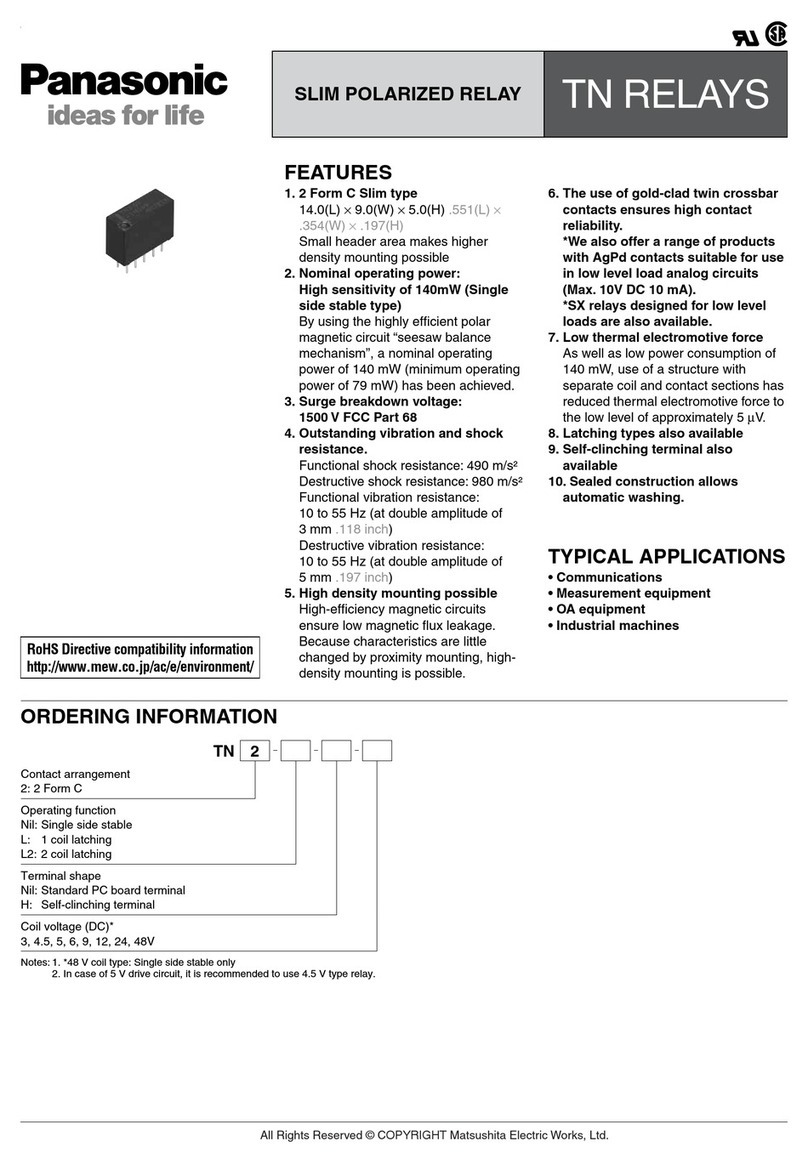
Panasonic Corporation Electromechanical Control Business Division
industrial.panasonic.com/ac/e/ Panasonic Corporation 2022
Cautions for Use of Solid State Relays
SAFETY WARNINGS
Do not use the product under conditions that exceed the range of
its specications. It may cause overheating, smoke, or re.
Do not touch the recharging unit while the power is on. There is a
danger of electrical shock.
Be sure to turn o the power when performing mounting,
maintenance, or repair operations on the relay (including
connecting parts such as the terminal board and socket).
Check the connection diagrams in the catalog and be sure to
connect the terminals correctly. If the device is energized with
short circuit or any wrong connection, it may cause unexpected
malfunction, abnormal heat or re.
Cautions for Use of Solid State Relays
Derating design
Derating is a signicant factor for reliable design and product life.
Even if the conditions of use (temperature, current, voltage, etc.)
of the product are within the absolute maximum ratings, reliability
may be lowered remarkably when continuously used in high
load conditions (high temperature, high humidity, high current,
high voltage, etc.) Therefore, please derate suciently below the
absolute maximum ratings and evaluate the device in the actual
condition.
Moreover, regardless of the application, if malfunctioning can be
expected to pose high risk to human life or to property, or if products
are used in equipment otherwise requiring high operational safety, in
addition to designing double circuits, that is, incorporating features
such as a protection circuit or a redundant circuit, safety testing
should also be carried out.
Applying stress that exceeds the absolute maximum
rating
If the voltage or current value for any of the terminals exceeds the
absolute maximum rating, internal elements will deteriorate because
of the overvoltage or overcurrent. In extreme cases, wiring may
melt, or silicon P/N junctions may be destroyed.
Therefore, the circuit should be designed in such a way that the load
never exceed the absolute maximum ratings, even momentarily.
Phototriac coupler
The phototriac coupler is designed solely to drive a triac. As a
condition, the triac must be powered beforehand.
Unused terminals
1) Phototriac coupler
The No. 3 terminal is used with the circuit inside the device.
Therefore, do not connect it to the external circuitry. (6 pins)
2) AQ-H
The No. 5 terminal is connected to the gate.
Do not directly connect No. 5 and 6 terminals.
Short across terminals
Do not short circuit between terminals when device is energized,
since there is possibility of breaking of the internal IC.
When used for the load less than rated
An SSR may malfunction if it is used below the specied load. In
such an event, use a dummy resistor in parallel with the load.
SSR
1
2
Load
Load power
supply
Ro (dummy resistor)
Load Specications
Type Load current
AQ-G All models
20
mA
AQ
1
All models
50
mA
AQ
8
All models
50
mA
AQ-J All models
50
mA
AQ-A (AC output type)
100
mA
Noise and surge protection at the input side
1) Phototriac coupler and AQ-H
If reverse surge voltages are present at the input terminals,
connect a diode in reverse parallel across the input terminals and
keep the reverse voltages below the reverse breakdown voltage.
Typical circuits are below shown.
< Phototriac coupler (6-pin)>
1
2
3
6
5
4
2) SSR
A high noise surge voltage applied to the SSR input circuit can
cause malfunction or permanent damage to the device. If such a
high surge is anticipated, use C or R noise absorber in the input
circuit.
Typical circuits are below shown
SSR
3
4
R
C
Control voltage
source
+
−
Recommended input current of Phototriac coupler and
AQ-H
Design in accordance with the recommended operating conditions
for each product.
Since these conditions are aected by the operating environment,
ensure conformance with all relevant specications.
Ripple in the input power supply
If ripple is present in the input power supply, observe the following:
1) Current-sensitive type (Phototriac Coupler, AQ-H)
(1) For LED forward current at Emin, please maintain the value
mentioned at “Recommended input current.”
(2) Please make sure the LED forward current for Emax. is no
higher than 50 mA.
2) Voltage-sensitive type (AQ-G, AQ1, AQ8, AQ-J, AQ-A)
(1) The Emin. should exceed the minimum rated control voltage
(2) The Emax. should not exceed the maximum rated control
voltage
Emin. Emax.
When the input terminals are connected with reverse
polarity
Product name If the polarity of the input control voltage is reversed
AQ
1
, AQ-J,
AQ-A (AC)
Reversing the polarity will not cause damage to the
device, due to the presence of a protection diode, but
the device will not operate.
AQ-H, AQ-G,
AQ
8
, AQ-A
(DC)
Reversing the polarity may cause permanent damage to
the device. Take special care to avoid polarity reversal or
use a protection diode in the input circuit.
